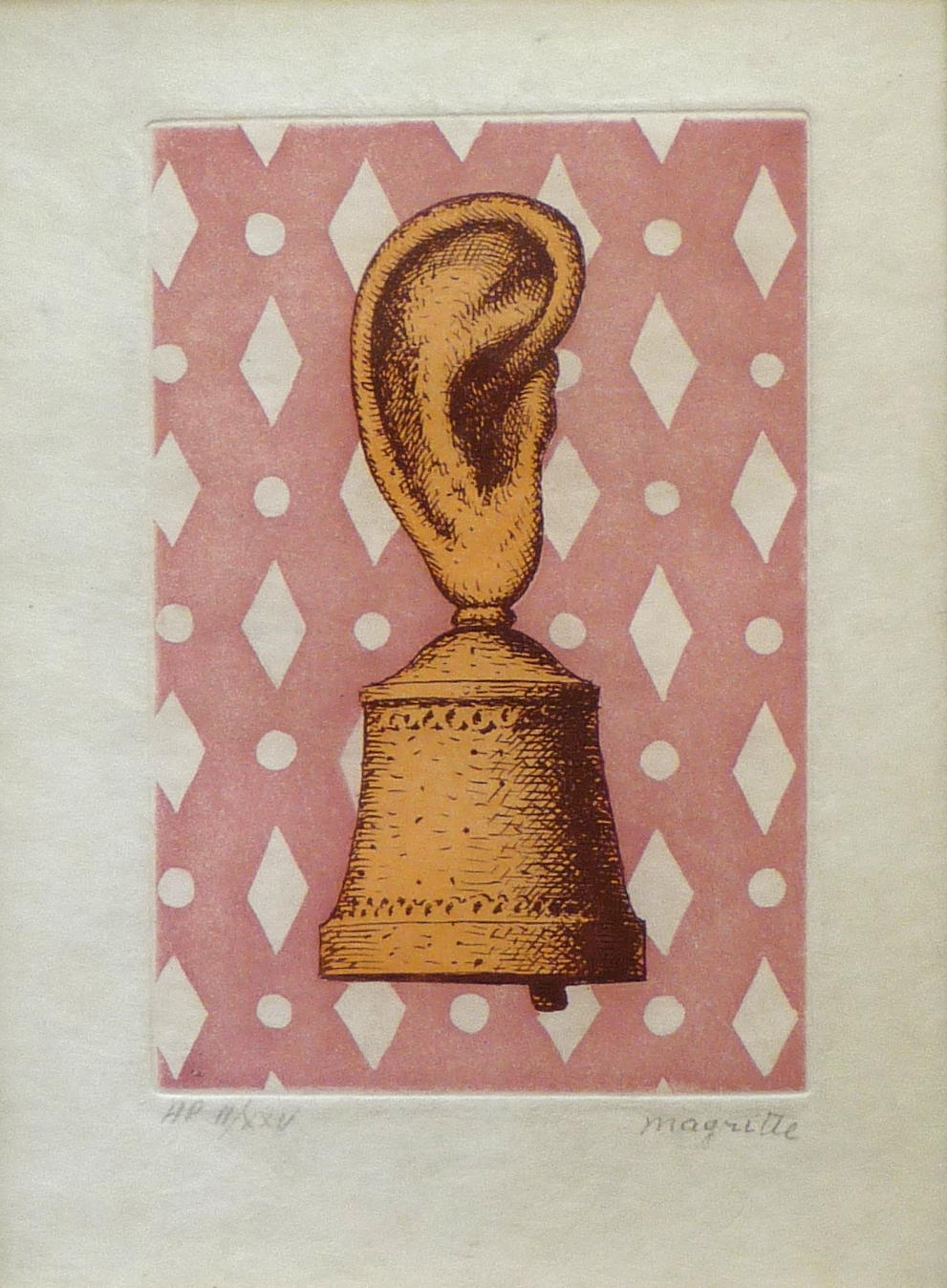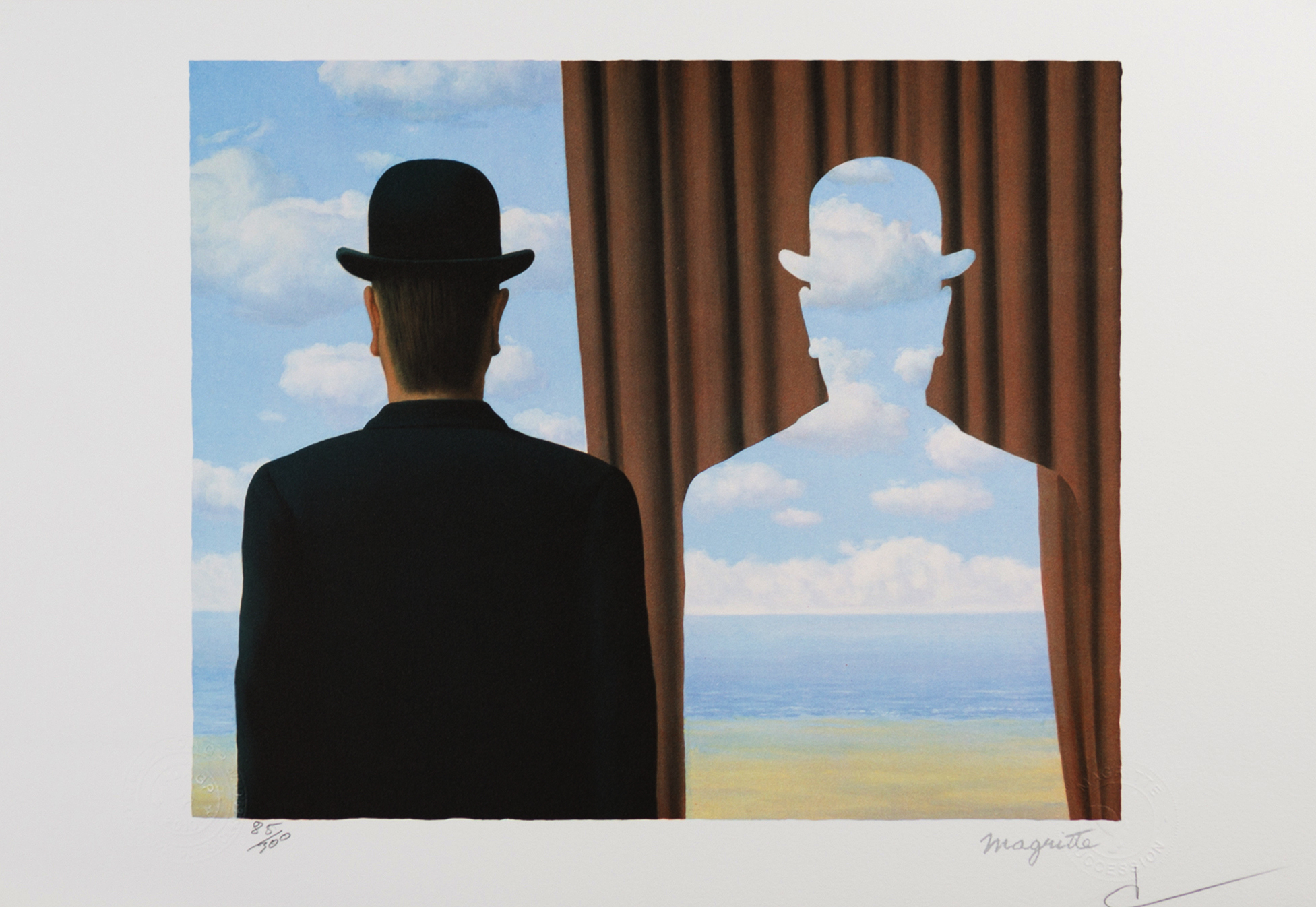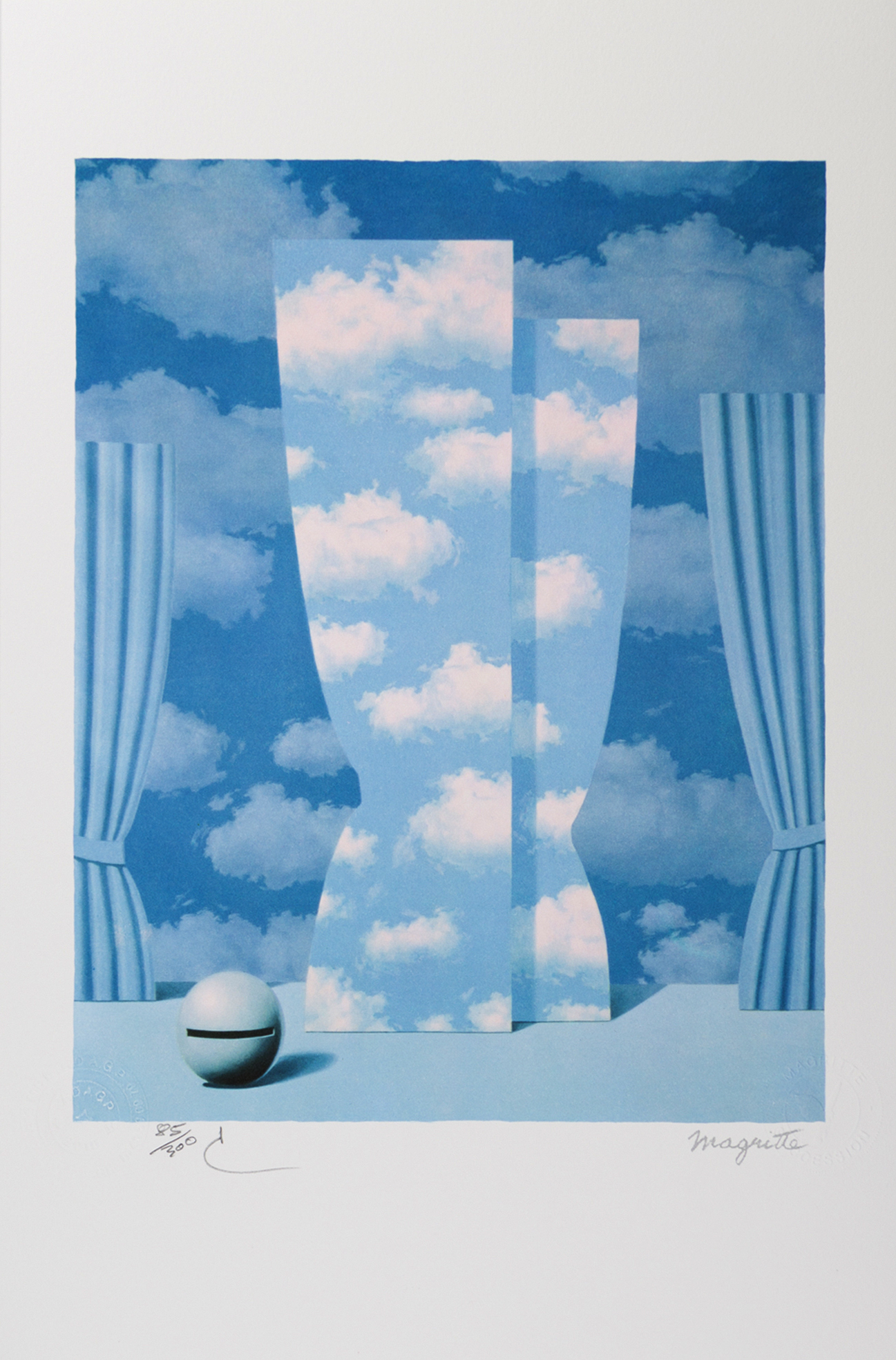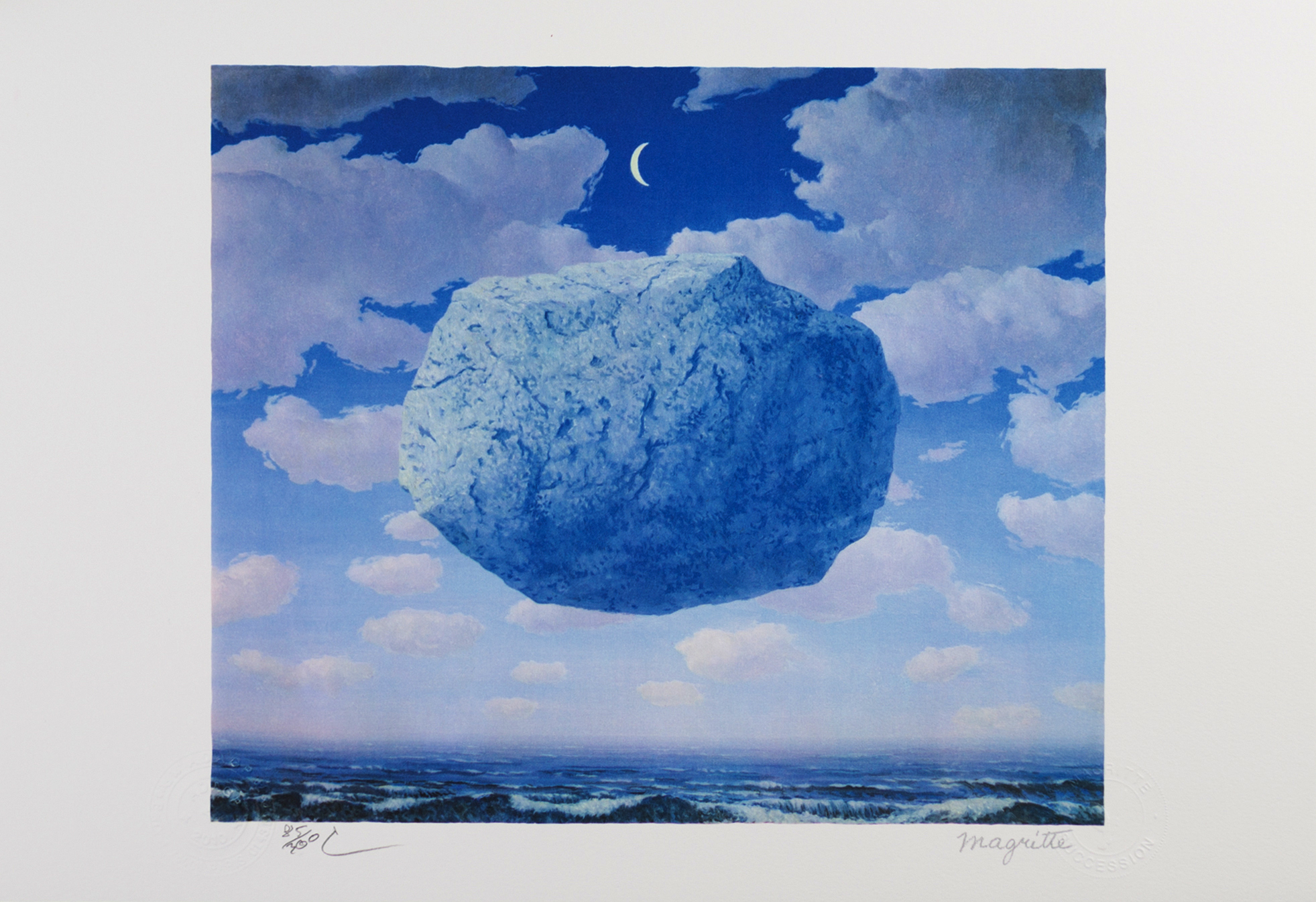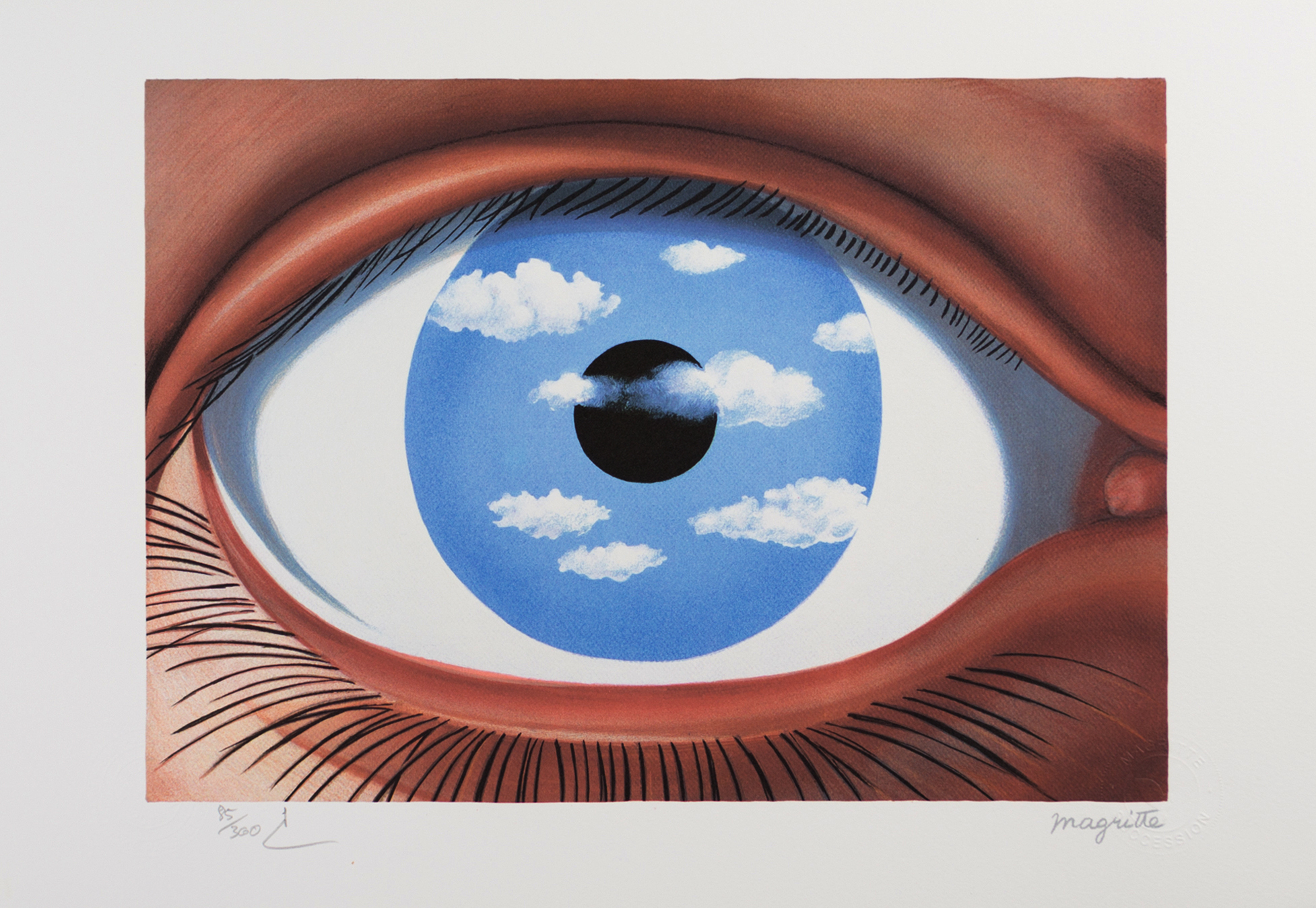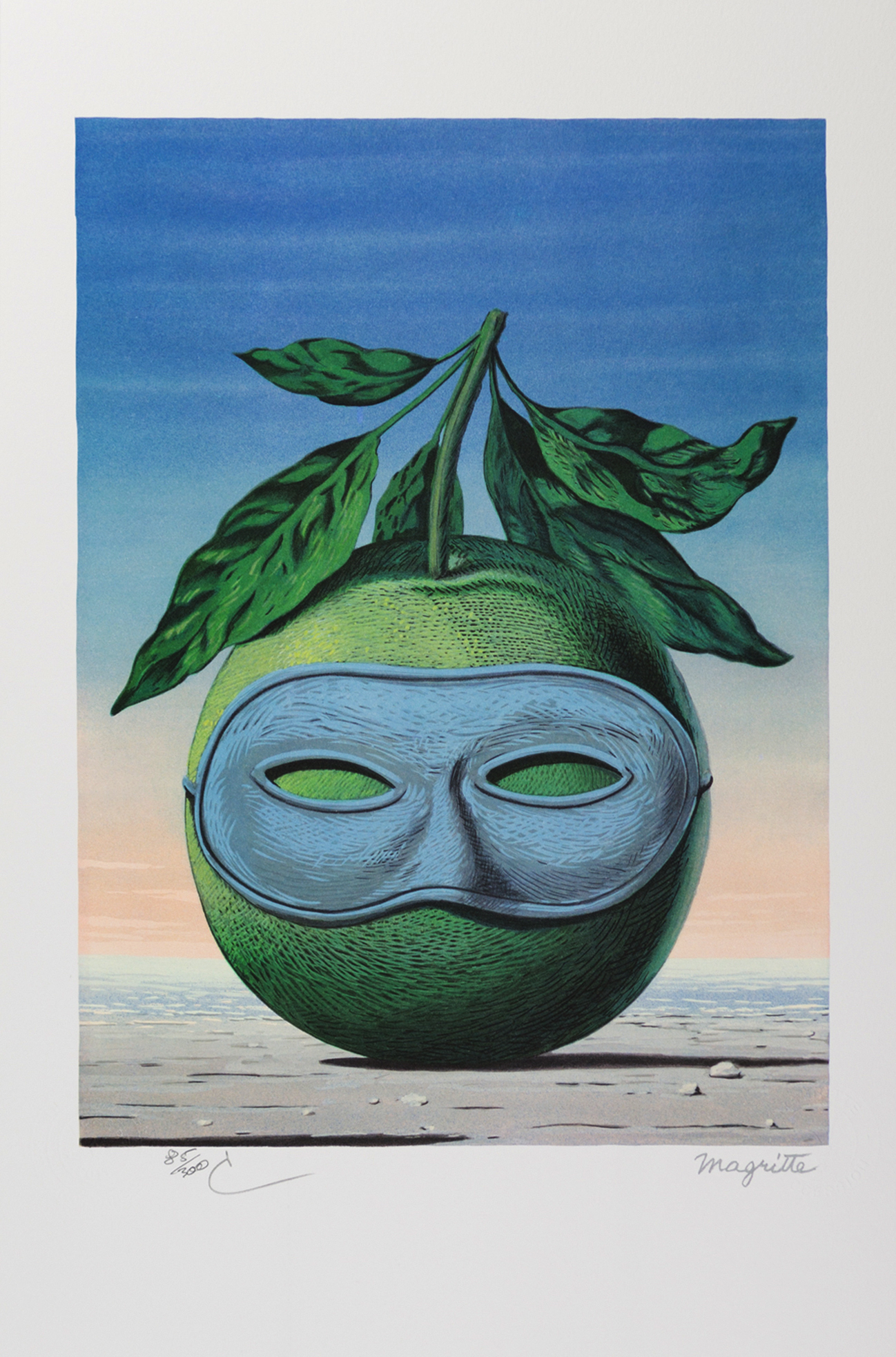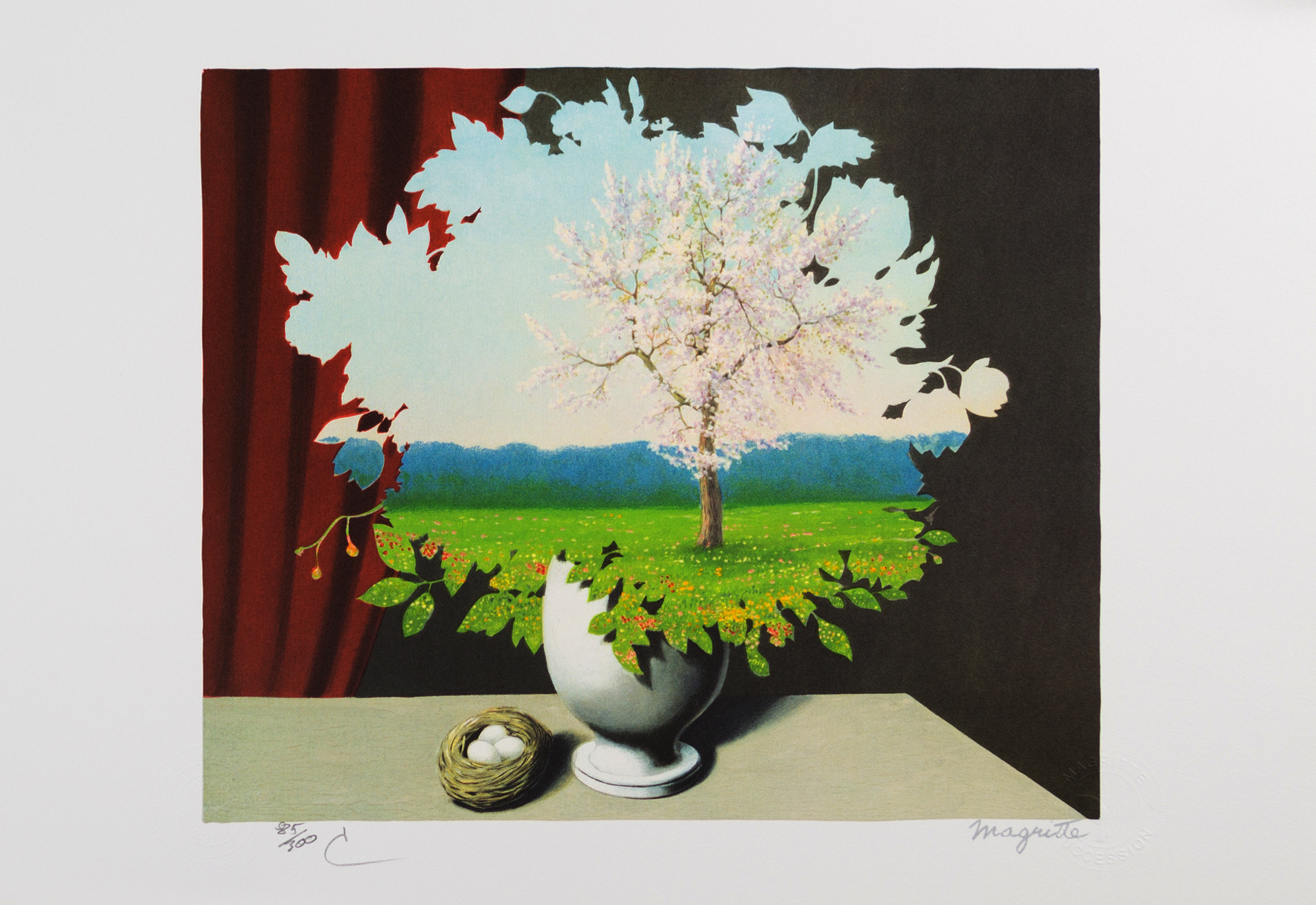Rene Magritte – La Lecon de Musique
Rene Magritte, La Lecon de Musique is an original Etching and Aquatint in colors on Japon paper. From the AP edition of 25 numbered in Roman Numerals. Signed in pencil lower right. Image Size: 5.5 x 4 inches. Frame Size: 16.5 x 12.5 inches. Printed by Atelier Visat. Kaplan 15.
With his highly cerebral Surrealist imagery, René Magritte breathed new life into seemingly conventional subject matter. He often painted everyday objects out of context, in juxtapositions forcing the viewer to reconsider things normally taken for granted. In his iconic trompe l’oeil work The Treachery of Images (1928-29), for example, Magritte painted a hyperrealistic pipe and wrote, just beneath it, “this is not a pipe”—a caution not to trust our eyes and reminder that the art object, no matter how convincing, is not the real thing. Magritte’s highly figurative style of Surrealism is often discussed along the work of Salvador Dalí and Giorgio de Chirico, and his persistent interrogation of objects has both influenced and paved the way for seminal artistic movements, from Conceptualism to Pop art. Belgian, 1898-1967, Lessines, Belgium, based in Brussels, Belgium.
| Title | La Lecon de Musique |
|---|---|
| Alt. Title | The Music Lesson |
| Medium | Aquatint, Etching |
| Year | 1968 |
| Edition | AP |
| Catalogue Raisonné | Kaplan 15 |
| Signature | Signed |
| Size | 11 x 8.75 (in) 28 x 22 (cm) |
| Price | SOLD |
Description
Rene Magritte, La Lecon de Musique is an original Etching and Aquatint in colors on Japon paper. From the AP edition of 25 numbered in Roman Numerals. Signed in pencil lower right. Image Size: 5.5 x 4 inches. Frame Size: 16.5 x 12.5 inches. Printed by Atelier Visat. Kaplan 15.
With his highly cerebral Surrealist imagery, René Magritte breathed new life into seemingly conventional subject matter. He often painted everyday objects out of context, in juxtapositions forcing the viewer to reconsider things normally taken for granted. In his iconic trompe l’oeil work The Treachery of Images (1928-29), for example, Magritte painted a hyperrealistic pipe and wrote, just beneath it, “this is not a pipe”—a caution not to trust our eyes and reminder that the art object, no matter how convincing, is not the real thing.
Magritte’s highly figurative style of Surrealism is often discussed along the work of Salvador Dalí and Giorgio de Chirico, and his persistent interrogation of objects has both influenced and paved the way for seminal artistic movements, from Conceptualism to Pop art. Belgian, 1898-1967, Lessines, Belgium, based in Brussels, Belgium.
Rene Magritte La Lecon de Musique
Rene Magritte, La Lecon de Musique
Additional information
| Title | La Lecon de Musique |
|---|---|
| Alt. Title | The Music Lesson |
| Medium | Aquatint, Etching |
| Year | 1968 |
| Edition | AP |
| Catalogue Raisonné | Kaplan 15 |
| Signature | Signed |
| Size | 11 x 8.75 (in) 28 x 22 (cm) |
| Price | SOLD |


